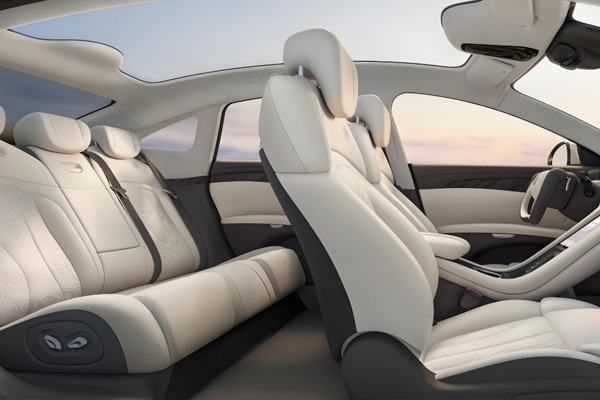The application of engineering plastics in the automotive industry is extensive and in-depth, and its lightweight, high temperature resistance, corrosion resistance and other characteristics have promoted the innovation of automotive manufacturing technology. The following is a detailed analysis of the main application areas, core advantages, and future trends of engineering plastics in the automotive industry:
1、 Main types and applications of engineering plastics
Polyamide (Nylon, PA)
Application: Engine peripheral components (such as intake manifold, engine hood), gears, oil filters, etc.
Advantages: Fiberglass reinforced nylon (such as PA6, PA66) has high strength and good heat resistance. Compared with metals, it can reduce weight by 50% and cost by 30%. BMW in Germany and Ford in the United States used PA66 to manufacture the intake manifold 2710 as early as the 1990s.
Innovation: PA9T is used for fuel system components and low friction sliding parts due to its excellent fuel resistance.
Polycarbonate (PC) and its alloys
Applications: car headlight covers, instrument panels, car windows (replacing glass), bumpers.
Advantages: PC is highly transparent and impact resistant, while PC/ABS alloy combines heat resistance and processing fluidity, making it suitable for complex interior parts. For example, PC/ABS alloy instrument panels can withstand high temperatures of 110-135 ℃ and can be directly sprayed without pre-treatment.
Trend: PC/PBT alloy is used for exterior components (such as bumpers), with low temperature impact resistance up to -30 ℃ 710.
Polyoxymethylene (POM)
Application: Sliding components such as gears, bearings, pump valves, safety belt buckles, etc.
Advantages: Low friction coefficient, wear resistance close to metal, can replace copper zinc alloy, reduce noise and lubrication requirements. For example, DuPont Delrin POM gears are used in power transmission systems, significantly reducing weight by 479.
Polybutylene terephthalate (PBT)
Applications: bumpers, carburetor components, ignition systems.
Advantages: Moisture and heat resistance (stable at 80 ℃ and 90% humidity), better water absorption resistance than PA. GE's PBT/PC alloy Xenoy 1731 is widely used in high-end car bumpers 2710.
Polyphenylene oxide (PPO) and its alloys
Application: Electrical components (connection box, fuse box), external components (wheel cover, tail light housing).
Advantages: PPO/PA alloy has excellent oil resistance and dimensional stability, suitable for high demand components such as engine hoods.
2、 Core advantages and technological innovation
Lightweight and energy-saving
The density of engineering plastics is only 1/4-1/7 of that of metals. For example, replacing metals with PBT can reduce weight by 30%, and every 10% reduction can improve fuel efficiency by 6% -8%.
In electric vehicles (EVs), lightweight materials can extend the range, such as the Teijin thermoplastic CFRP cab frame weighing only 47 kilograms, which is 1/546 of traditional metal.
High temperature resistance and safety
PPS can withstand temperatures up to 260 ℃, while LCP is used for high-frequency connectors to reduce signal loss; PA46 (Stanyl) is used in the fuel injection system of diesel engines and can withstand a high temperature of 160 ℃ 4810.
Engineering plastics can improve pedestrian protection performance in collision energy absorption system (such as bumper foam module) 10.
Environmental Protection and Sustainable Development
Biobased materials (such as DuPont Sorona containing 37% plant-based ingredients) and recyclable formulations (such as BASF Ultradur B4330G6 hydrolysis resistant PBT) are gradually becoming popular.
Spray free technology (such as the Jinhu Rili Ecoblend series) reduces VOCs emissions and improves recovery rates by 410.
3、 Market Trends and Challenges
Market size and growth
The global market size of automotive engineering plastics is expected to reach 14.7-32 billion US dollars in 2022 (for different segments), and is projected to increase to 22.3-55 billion US dollars by 2030, with a CAGR of 5.3% -7.5%.
The Asia Pacific region holds a 40% market share, and China's automotive plastic usage is about 70 kilograms per vehicle (6% of the total weight), which still has room for improvement compared to Germany (15%).
Technology Trends
3D printing and nanotechnology: rapid prototyping of complex components, nano modified PA6 reduces heat release rate by 63%.
High frequency material: LCP is used as a 5G automotive antenna substrate to reduce signal loss by 38.
challenge
Cost and Recycling: Engineering plastics are priced higher than metals, and recycling thermosetting composite materials is difficult.
Competitive pressure: The rapid development of light metal technologies such as magnesium alloys and high-strength steels requires technological innovation to maintain an advantage.
4、 Typical case
Intake manifold: Fiberglass reinforced PA66 (Ford V6 engine) replaces metal, reducing weight by 50% 27.
Bumper: GE's Xenoy 1731 (PBT/PC alloy) combines impact resistance and chemical resistance.
Seat back: BASF Ultramid polyamide replaces metal, reducing weight by 20% and optimizing space by 48.
5、 Future prospects
Intelligence and Electrification: The demand for EV battery components and sensors drives the research and development of high-performance plastics.
Biobased and biodegradable materials, such as PLA and biobased PBT, meet the carbon neutrality target of 89.
Integrated design: replacing multiple metal components with a single injection molded part, reducing costs and assembly complexity by 910.
Through continuous innovation, engineering plastics are becoming the core material for automotive lightweighting and intelligence. In the future, they will be further applied in the direction of high performance and sustainability, helping the industry cope with the dual challenges of environmental regulations and technological changes.

